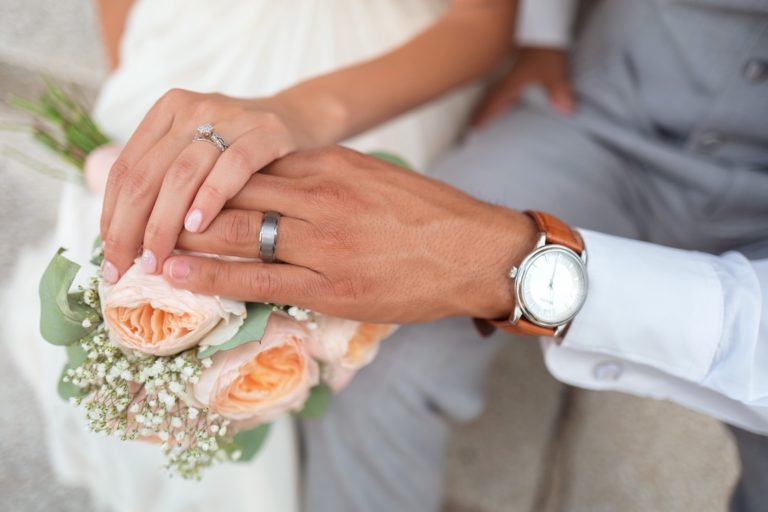A Guide to Removal of Conditions
What is CR-1 Conditional Residency? How do I change my conditional marriage green card to permanent?
What is Removal of Conditions?
Why do I have a Conditional Green Card? Why is my marriage green card only valid for two years?
Your green card or spouse visa will be “conditional” and only valid for two years if you and your spouse had not been married for two years when it was approved. The next step is to apply for Removal of Conditions to get a 10-year green card as a permanent resident in the US.
The Our Love Visa Experience
Our Love Visa has a simple mission. We believe it should not be difficult or expensive to bring couples together. OLV has helped thousands of couples navigate the immigration process, and it would be a privilege to help you too.
What is a Conditional Green Card?
With a conditional green card, you can live and work in the United States like any other green card holder. The difference is, as a conditional permanent resident, your green card is only valid for two years and cannot be renewed. Instead, you must apply for a full, 10-year green card, using the Removal of Conditions Application (I-751) within the 90-days before your conditional Green Card expires. The permanent 10-year green card is renewable.
Conditional Green Cards and Marriage-based Immigration
The conditional green card serves as a safeguard for the U.S. immigration service who wants to make sure the marriage green card process is not being abused. It allows the U.S. government to “double-check” that your original marriage green card or spouse visa application was based on a genuine marriage.
To remove the conditions on your two-year conditional Green Card, you must file a petition 90 days before the expiration date. If you do not apply to change from a conditional resident to a permanent resident, you will lose your lawful resident status and may have to leave the U.S.
For the Removal of Conditions process, You will again need to demonstrate the validity of your marriage. (The words “immediate relative” are denoted by the letters “IR1” on the actual green card.)
How to Apply For Removal of Conditions
You must apply Form I-751, the “Petition to Remove Conditions,” if you or your spouse have a conditional permanent residence to get a permanent green card. The following are some of the most crucial points to bear in mind:
- Time management is important. The 90-day timeframe before your conditional permanent residence expires is when you must submit your I-751. If you can not provide any justification for the delay, your application will be returned if it is submitted too soon or refused if it is submitted too late.
- It is a joint petition, Form I-751. Both couples must jointly fill out the form, and both spouses must sign it.
- You will need to provide further proof that your marriage is genuine. The same kinds of proof you submitted with your first green card application should be supplied again, but this time it should be evidence you gathered after your initial green card application was accepted. USCIS anticipates that because you have been married for two more years, you will have updated family portraits, shared financial records, and even children.
- A duplicate of the front and back of your conditional green card must be submitted, together with $680 in filing fees ($595) and biometrics fees ($85).
- Before April 7, 2022, couples were required to appear for a USCIS officer interview to have the restrictions on their residence lifted. After April 7, 2022, USCIS could decide to forgo the interview if the couple’s proof is convincing enough to persuade the reviewing officer that the marriage is legal.
Our experts will assist you through the necessary paperwork and papers on your Removal of Conditions (ROC) application so that you can confidently submit it. .
What Happens If the Conditions Are Not Removed?
When your conditional green card expires, you will be “out of status” if the constraints on your permanent residence are not removed. You could be subject to deportation procedures, and in any case, you will start accumulating “unlawful presence” that might result in a three- or ten-year ban on reentering the country if you do.
Why You Might Be Rejected?
There are normally just three grounds for rejecting a request to lift the restrictions on permanent residence. As follows:
- Applying after the deadline without presenting justification for the delay.
- Failing to prove that you and your spouse have established a joint life.
- USCIS believes your marriage is fake.
You can monitor your window to submit Form I-751 with the aid of Our Love Visa so that you may do so on time and steer clear of any possible snags or hazards. It is possible to avoid all of those reasons for denial by making sure that Form I-751 is completed on time, by providing solid evidence that you have built a life with your spouse, and by answering any Requests for Evidence (RFEs) you obtain from USCIS.
Marriage-based Green Card & Removal of Conditions
Every marriage-based green card holder who has been married for less than two years gets a conditional green card and is a conditional permanent resident.
The amount of documentation you and your spouse presented to prove your relationship is legitimate or how satisfied U.S. Citizenship and Immigration Services (USCIS) is that you are married in good faith has no bearing on whether you are granted a Conditional Green Card vs. a Permanent Green Card. However, it does indicate that obtaining a permanent green card requires one more step.
Specific Issues for Removal of Conditions Purposes
What if we get divorced?
You can still apply to remove the conditions on your CR1 visa/green card and to get a permanent residence card if your marriage dissolves. However, you will need to request USCIS to waive the requirement of having your spouse submit the form with you. You will nonetheless need to demonstrate, with supporting evidence, that your marriage was genuine and not only for a green card.
Typically, your application to Remove Conditions will be stronger if you can show that your U.S. Citizen/Permanent Resident spouse that sponsored your marriage-based green card was responsible for the dissolution of your marriage and/or that they started the divorce. Showing efforts to keep the marriage together, such as marital or couple’s counseling, is also good evidence to support your Application for Removal of Conditions.
You do not have to wait until 90 days before your conditional permanent residence expires if your marriage ends in divorce before you may file Form I-751; you can do so at any moment before you are deported from the country. A copy of your legal divorce decree should be sent with your application.
What if my spouse dies?
You must submit Form I-751 with a copy of your spouse’s death certificate and any documentation you have of your life together if your spouse passes away before you may lift the restrictions on your permanent residence.
You do not have to wait until 90 days before the expiration of your conditional permanent residence in this situation; you may submit your Form I-751 at any time between the time of your spouse’s death and the day your green card expires.
What if I was in an abusive or violent marriage?
If your husband assaulted you while you were married, you might request that restrictions on your permanent residence be lifted on your own. Restraining orders, testimonies from domestic violence shelters, photos and/or medical records describing injuries sustained as a consequence of the abuse, or other documentation, should be used as proof of the abuse. A copy of your final divorce decree should be sent if you have divorced. Study up on your legal rights.
What if my marriage didn’t work out, and losing my U.S residence would cause me “severe hardship”?
The most difficult category to qualify for is this one since you do not need to demonstrate that your marriage was entered into in good faith or for purposes other than obtaining a green card. Instead, you must demonstrate that returning to your own country would cause you “severe hardship.” The only circumstances taken into account by USCIS when evaluating petitions that assert “severe hardship” are those developed after your green card was first authorised.
For example, it may constitute a “severe hardship” if a civil war broke out in your country of origin between the time you first filed for a marriage-based green card and the time you requested to have the limitations on your green card lifted. For additional details about severe hardship, see this website.
If more than one of the aforementioned special circumstances apply to you, you can ask USCIS to take them all into account by checking as many boxes on Form I-751 as apply to you. For instance, if you were in an abusive marriage that ended in divorce and your removal from the country will put you through extreme hardship, you would check all three boxes on the I-751 to ask USCIS to take your circumstances into account when evaluating your request for a 10-year green card.
History of Conditional Permanent Residency
Since family ties—particularly marriages—became one of the main methods to move to the United States, marriage fraud has been an issue in U.S. immigration law. One in three marriages between Americans and foreigners was deemed to be fake in 1986, according to the predecessor of USCIS. In an attempt to discourage fictitious weddings, Congress also established the “conditional green card” in the same year it started adopting stricter criteria for marriage-based green cards.
As it turns out, it was much overstated to claim that a third of couples who seek marriage-based green cards were married exclusively for immigration purposes. According to the agency’s updated estimates, just a tiny portion of marriage-based green card applications are fake. Fewer than 1% of marriage-based green card requests are rejected due to fraud.
Even if the fears of fraud that led to the establishment of conditional green cards (CR-1 visas) for newlyweds were exaggerated, they have remained a component of the U.S. immigration system. They provide USCIS with another opportunity to review your relationship’s sincerity and confirm that you are indeed married or “bona fide.”

Our Love Visa makes your immigration process easy, fast, and worry-free, guaranteed. We provide you with complementary tools and resources free that help you plan your future in the United States together. Learn about how OLV is helping couples through their immigration journey.







